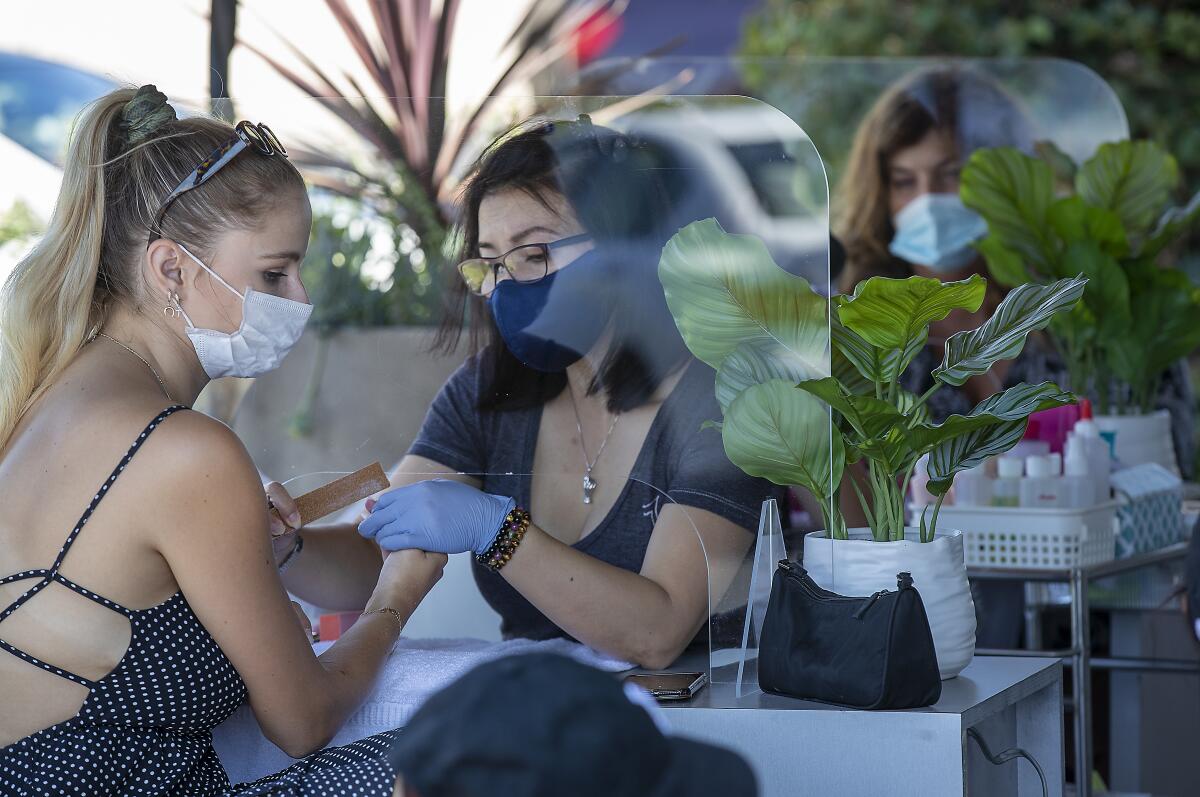California, other states ‘are essentially three New Yorks,’ White House’s Birx says

- Share via
A surge in coronavirus cases has made California and other hard-hit states resemble “three New Yorks,” the epicenter of the nation’s COVID-19 crisis in the spring, but there are signs the wave is abating, the White House’s coronavirus response coordinator said Friday.
“We’re already starting to see some plateauing in these critically four states that have really suffered under the last four weeks, so Texas, California, Arizona and Florida, those major metros and throughout their counties,” Dr. Deborah Birx said in an interview on NBC’s “Today.”
“And I just want to make it clear to the American public: What we have right now are essentially three New Yorks with these three major states,” she said, apparently referring to Texas, California and Florida, the most populous of the states she listed.
Birx said that the rise in infections in the four states was driven by people in their 20s and 30s who didn’t have symptoms and didn’t realize they were spreading the virus. Young people are less likely to require hospitalization or seek testing, so their cases are less likely to be detected, she said.
For that reason, she said, it’s important for local officials to keep an eye on the rate at which people are testing positive for the virus and take action at the first sign of even a slight increase.
“We also know now ... about test positivity,” she said. “And I think we have a lot more knowledge now that when it just ticks up a little, even before you see a significant increase in cases, that that is a real indicator that something is happening.”
Her comments came two days after California reported a record number of coronavirus cases. Gov. Gavin Newsom said Wednesday that 12,807 new infections had been reported statewide in the previous 24 hours, the most since the pandemic began. California has now recorded more cases than any other state with a total of 436,312 as of Friday, according to the Los Angeles Times coronavirus tracker.
California’s COVID-19 hospitalizations hit records this week, surpassing 7,000 for the first time. On Monday, 7,091 people with coronavirus infections were in the hospital statewide; on Tuesday, the figure was 7,170; on Wednesday, it was 6,825; and on Thursday, it was 6,952. Two months ago, about 3,000 infected people were in California’s hospitals.
The state also recorded its highest coronavirus-related fatality numbers this week. The seven-day average for such deaths reached 102 on Thursday, topping 100 for the first time, according to a Times analysis. Daily death tolls have soared in recent days, hitting 119 Tuesday, 158 Wednesday — a new one-day record — and 153 Thursday, the second-worst daily death toll.
Many experts predicted the state would see an increase in deaths about four to five weeks after cases began to rise rapidly in late June. Still, California’s toll, which stood at 8,280 on Friday, remains much lower than that of New York, where more than 32,200 people have died.
There were some increasing signs of optimism in Los Angeles County, whose residents account for nearly 40% of the state’s coronavirus cases and about half its deaths. Barbara Ferrer, the county’s director of public health, on Wednesday ruled out the need for a renewed stay-at-home order at least for now.
The effective transmission rate of the coronavirus is now at about 0.94, meaning that on average, every person infected with the virus passes it on to 0.94 people, said Dr. Christina Ghaly, director of health services for L.A. County. That’s better than it was in June, when it rose above 1 and fueled the surge.
And the number of new patients with COVID-19 requiring hospitalization in L.A. County, which had been rising, has become flat and maybe even started to decrease, Ghaly said. It’s plateaued at a substantially worse number than it was in April, but the data nonetheless suggest an improvement, she said.
County public health officials on Friday reported 1,949 new cases of the virus but said the number was artificially low due to reporting delays in the state’s electronic laboratory system and would probably rise in the coming days as more data became available. The county also recorded 44 additional deaths.
Officials reported 1,928 confirmed coronavirus patients in county hospitals with 29% in intensive care, but said those figures were also incomplete because the U.S. Department of Health and Human Services had changed reporting requirements, resulting in data from 11 hospitals being left out.
“Even with incomplete case and hospitalization data, we are seeing too much community spread of this virus, which means many of our friends, family and neighbors are sick and suffering,” Ferrer said in a statement.
“As we head into the weekend, I hope we each understand that continuing our recovery journey, including re-opening schools and businesses, is only possible if we get back to slowing the spread.”
Times staff writers Sean Greene, Priscella Vega and Maura Dolan contributed to this report.
More to Read
Sign up for Essential California
The most important California stories and recommendations in your inbox every morning.
You may occasionally receive promotional content from the Los Angeles Times.












